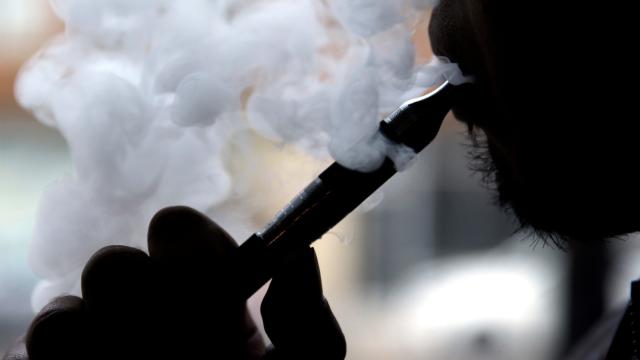The toll of people sick with acute lung illness tied to vaping has doubled since last week, with around 354 suspected cases across the U.S. Now, health officials are finally starting to publicly zero in on a leading suspect: unlicensed additives and contaminants, particularly those found in products containing THC.
The Washington Post reported Friday that U.S. state and federal health officials have documented 354 suspected cases of the vaping-linked syndrome across 29 states. In Wisconsin, the first state to report these cases, there have been 32 confirmed and 11 possible cases as of last Friday.
The numbers are somewhat in limbo, though, likely due to differing definitions of the syndrome and delays in tallying up all the cases. The U.S. Centres for Disease Control and Prevention said, for instance, that there have been 215 possible cases reported from 25 states as of Wednesday, with additional reports of pulmonary illness being looked into.
On Saturday, the CDC also issued a standard case definition for doctors to use in diagnosing the condition. All of the victims, typically young and otherwise healthy, have said they vaped in the days and weeks before their symptoms began.
The progressively worsening symptoms have included cough, shortness of breath, and fatigue, while some people have also had gastrointestinal issues like vomiting and diarrhoea. Though many patients have recovered soon after being hospitalised, others have endured weeks of intensive care along with lingering health problems, and at least one person in Illinois has died.
Health officials have been slow to name any primary culprits for the cluster since cases were first reported in late July.
Part of that reluctance is no doubt due to the growing and sprawling scope of the investigation, which now involves dozens of state and federal agencies. But THC-containing products continue to be identified as a common link among patients.
“It was pretty severe, the one case we’ve dealt with… and there was both nicotine and THC use reported,” Sanjay Sethi, the division chief of pulmonary, critical care, and sleep medicine at the University at Buffalo and UBMD Internal Medicine program, told Gizmodo by phone. Western New York in particular has reported the bulk of vaping cases within the state, now thought to be over 25 in total.
Though there are still many unanswered questions, it now seems incredibly unlikely these cases are being caused by a typical e-cigarette. Instead, the focus is shifting to the ingredients used by black-market sellers and home-brewers to make products and cartridges containing THC.
An unnamed CDC official told the Washington Post that the investigation is “starting to point to what solvents are being used, and that can vary a lot.”
Along with the solvents used to deliver heated THC to the lungs, unknown additives used to cut the amount of THC being sold in counterfeit products could also be causing the injuries. Contaminants introduced into these products, often produced and sold in “pop-up” shops, could be another important factor.
Wisconsin health officials, as of Thursday, have warned the public to “avoid vaping any THC products.” The CDC is similarly warning people not to buy any e-cigarette products off the street, including those with THC, or to modify their existing products with anything not provided by the manufacturers.
But as the CDC notes, not all victims have reported THC use. And some patients, such as the one treated by Sethi and his team, also have a history of vaping nicotine. So there’s still the possibility that other things — including contaminants found in nicotine-only products — could be causing these symptoms for some people. It’s also possible these cases have been happening for years, before the current trend of vaping THC, but were never attributed to e-cigarettes before.
“It can be really challenging to support these patients and find the right, specific treatment for them,” Sethi said, noting that his team’s patient was eventually transferred to another medical centre after he failed to improve with steroid treatment.
“This might be one syndrome, where symptoms are presenting in the same way. But within that, I’m sure there are going to be different reasons among different patients.”
Typical vaping products aren’t entirely off the hook either. Over the weekend, Bloomberg reported that some of the first reports of seizures linked to vaping sent to the U.S. Food and Drug Administration involved products sold by the vaping giant Juul. And on Friday, Juul CEO Kevin Burns, citing the unknown long-term risks of vaping, told nonsmokers not to buy his company’s products.
